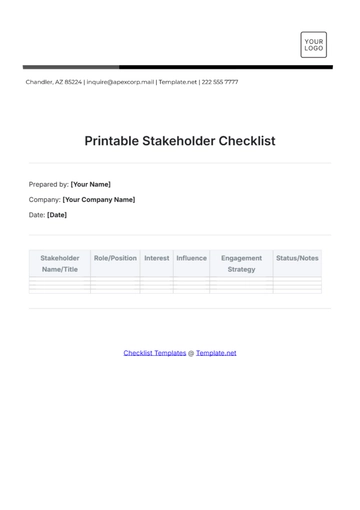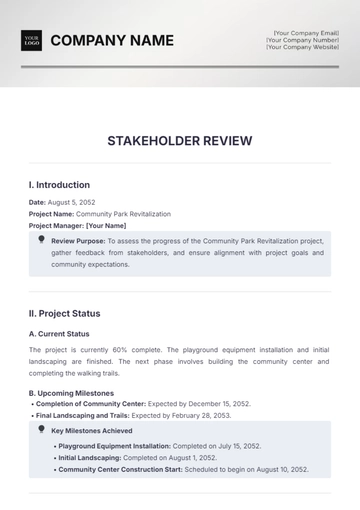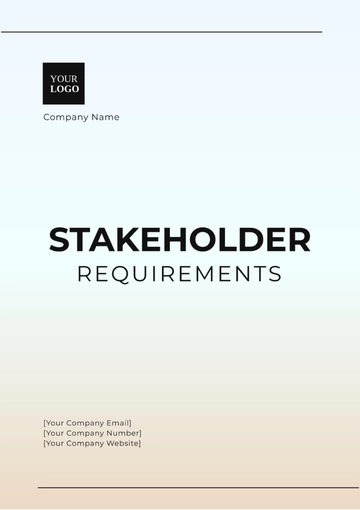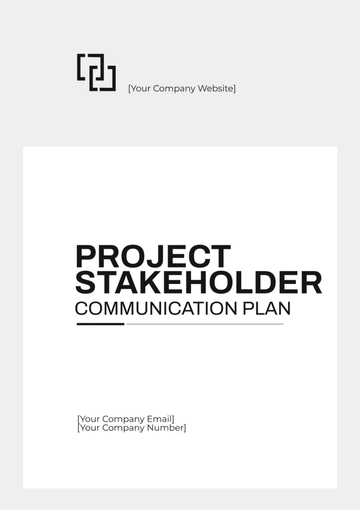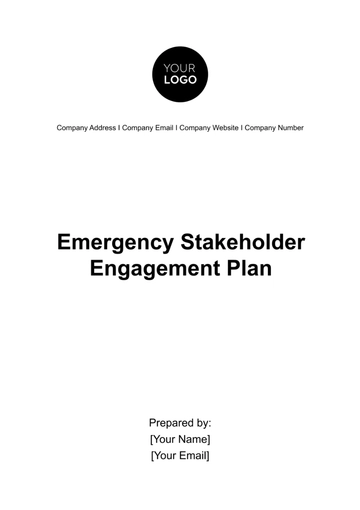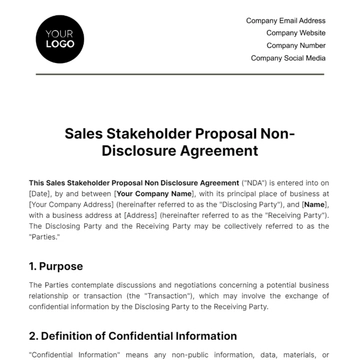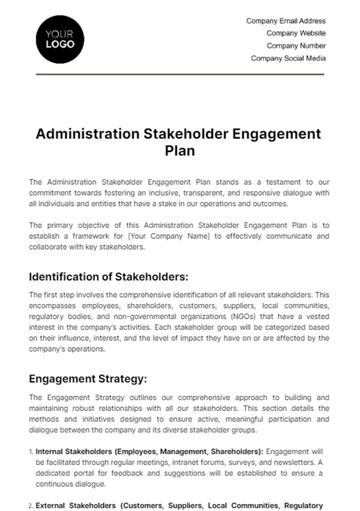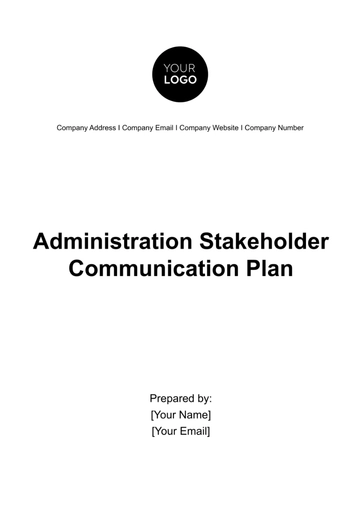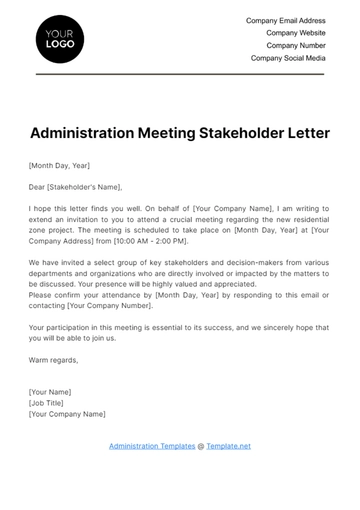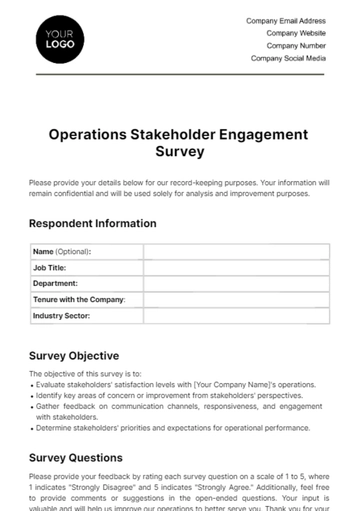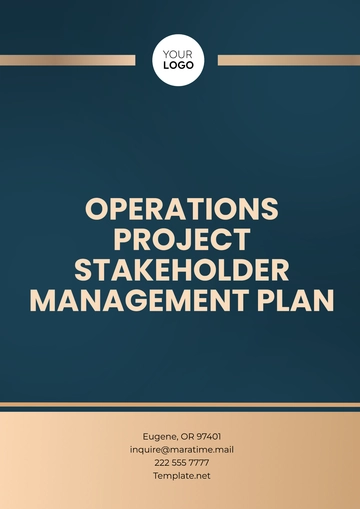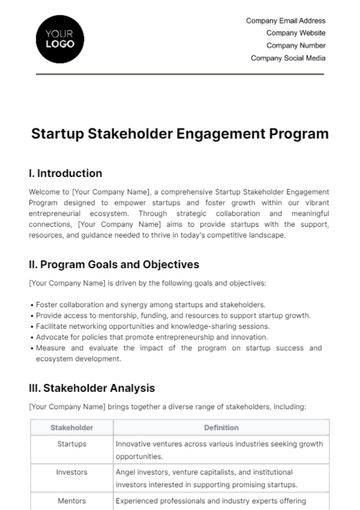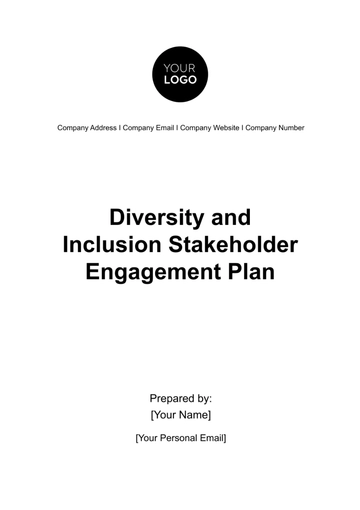Stakeholder Case Study
I. Introduction
In this section, provide an overview of the case study, including the project, organization, or initiative being examined, as well as its significance. Introduce the key stakeholders involved and briefly outline the objectives and scope of the study. The case study titled [Project Name] delves into the dynamics and impact of stakeholders within the context of [Your Company Name]. It aims to analyze the relationships, interests, and influence of various stakeholders involved in [Your Department]'s initiative to [brief description of the project]. Understanding these dynamics is crucial for effective decision-making and stakeholder management throughout the project lifecycle.
II. Background and Context
This section provides the necessary background information and context to understand the project or initiative and the stakeholders involved. Use bullet points or numbered lists where appropriate to outline key points.
Project Overview: Provide a detailed description of the project, its objectives, and its expected outcomes.
Organizational Context: Describe the organization's structure, culture, and any relevant internal or external factors influencing the project.
Stakeholder Identification: Identify and categorize the key stakeholders involved, including internal and external parties, and their roles and interests in the project.
II. Stakeholder Analysis
Here, conduct a comprehensive analysis of the identified stakeholders, examining their interests, influence, attitudes, and potential impact on the project. Use tables or matrices to visually represent stakeholder attributes.
A. Stakeholder Mapping
Stakeholder Matrix: Create a matrix categorizing stakeholders based on their level of influence and interest in the project.
Stakeholder Profiles: Develop detailed profiles for each stakeholder, outlining their objectives, expectations, concerns, and potential contributions.
B. Power-Interest Grid
IV. Stakeholder Engagement Strategies
Propose strategies for effectively engaging and managing stakeholders throughout the project lifecycle. Highlight communication channels, feedback mechanisms, and approaches for addressing stakeholder concerns and expectations.
Communication Plan: Develop a communication plan outlining the frequency, mode, and content of communication with stakeholders.
Engagement Activities: Identify specific engagement activities, such as stakeholder meetings, workshops, or surveys, to solicit input and feedback.
V. Impact Assessment
Assess the impact of stakeholder dynamics on the project's success and outcomes. Evaluate how effectively stakeholders were managed and engaged, and identify lessons learned for future projects.
Success Metrics: Define key performance indicators (KPIs) to measure the project's success and stakeholder satisfaction.
Lessons Learned: Document lessons learned from stakeholder management efforts, including successes, challenges, and areas for improvement.
VI. Conclusion
Summarize the key findings of the case study and reiterate its significance in understanding stakeholder dynamics and impact. Provide recommendations for enhancing stakeholder management practices in future projects.
The case study on [Project Name] provides valuable insights into the complexities of stakeholder dynamics and their impact on project success. By analyzing the interests, influence, and engagement strategies of key stakeholders, organizations can better navigate stakeholder relationships and drive successful project outcomes.
VII. Appendix
The provided Case Study Template offers a structured approach to analyzing stakeholder dynamics and impact within a specific project, organization, or initiative. It begins with an Introduction that outlines the purpose and scope of the study. Background and Context provide essential information about the project and its stakeholders, while Stakeholder Analysis delves into understanding stakeholder attributes such as influence and interest levels. Stakeholder Engagement Strategies and Impact Assessment propose methods for effectively managing stakeholders and evaluating their impact on project success. The Conclusion summarizes key findings and recommendations for future stakeholder management practices.
Prepared By:
[YOUR NAME]
[YOUR POSITION]
[YOUR DEPARTMENT]
Contact Information:
[Your Company Email]
[Your Company Number]
[Your Company Website]
[Your Company Address]
Case Study Templates @ Template.net


